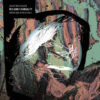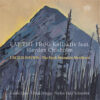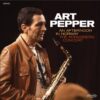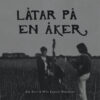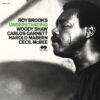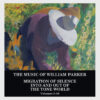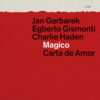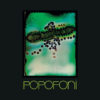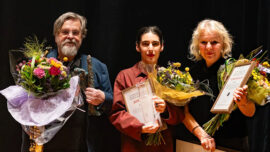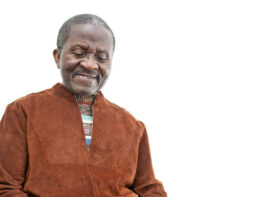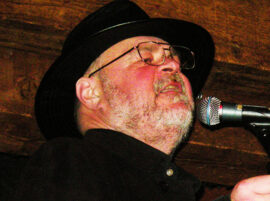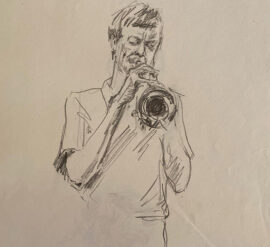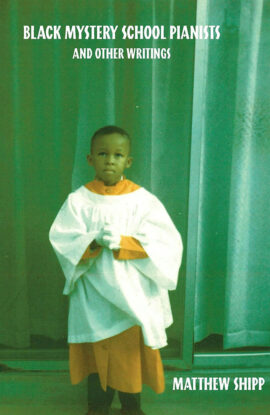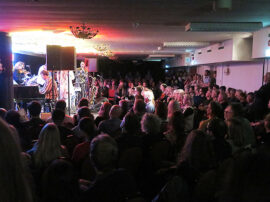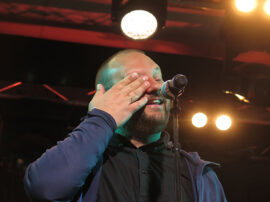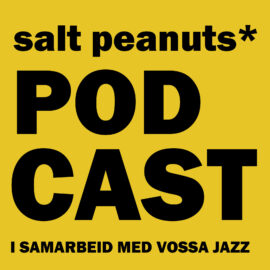For noen dager siden publiserte vi anmeldelse av Shannon Mowday & Lila sin plate «The Land In-Between», en anmeldelse du kan lese https://salt-peanuts.eu/record/shannon-mowday-lila/. I den forbindelse hadde Mowday lyst til å dele noen tanker, først og fremst med oss i salt peanuts*, men også med våre lesere, om å være musiker fra Sør-Afrika som har flyttet til Norge, og litt om hvorfor hun spiller slik hun gjør – med norske musikere.
……….
I just wanted to respond to something you said about the album being quite Norwegian and not really South African. This is something that is quite close to my heart so I wanted to share some thoughts – not to ‘defend’ this in any way but to present a different side to my story and perhaps present another side to South Africa.
South Africa is an incredible place with so much culture and history and I was very fortunate to grow up in a very big melting pot of influences. Even though I grew up during apartheid – aside from the fact that music always brings people together regardless of rules, my dad was a music teacher and one of the few ‘white’ teachers at a racially mixed school (it was for visually impaired children) as well as training local ‘christmas bands (this is a whole tradition of playing). This meant my brother and I grew up in a very different environment to many of our peers – we were all musicians so were often locked in places for our safety as we were (as whites) not supposed to be there. From very early ages (15 or 16), we were playing everywhere and we were ‘protected’ as everyone knew my dad’s work and that we were there for music. It was such a vibrant and culturally rich environment with so many different influences.
So the musicians I grew up with were the ones who actually remained in South Africa during apartheid. Even though I didn’t have these experiences with them as too young, they told stories of playing behind curtains while rest of band on stage, having to put waiters uniforms on so if police raided the place they wouldn’t be seen as musicians – the pass laws also meant they were not allowed out past certain hours at night and often it resulted in their instruments or rights to play were taken away. Because of sanctions, there were not many musicians coming to our shores and there was a very obvious sound that was created within the country by the musicians. Due to apartheid laws, many of these musicians were never recorded nor the music documented. Many died and so much was lost (this is a whole chapter in itself).
So at the same time many artists went into exile (like Hugh Masekel, Dollar Brand, Chris Mc Gregor, Miriam Makeba, Bheki Mseleku etc) and created a South African sound away from South Africa. So certainly in Europe, this is largely what is known as ‘South African Jazz’.
So there were really two ‘streams’ of SA Jazz that was created – those that left and those that stayed behind.
The sad thing is so much of this music of these people was lost and they were never given their true place in the history of SA Jazz. A friend of mine now leads the University of Cape Town Jazz Department and she is actively trying to bring back some of the sounds of ‘heros’ that actually endured the hardships of apartheid into the spotlight. (Many are dead) Names like Basil and Cliffie Moses, Errol and Alvin Dyers, Chris, Tony and Hilton Schilder, Robbie Janssen , Winson Mankuku, Sophia Foster, Tina Schouw, Monty Weber – these are not names that even left our shores yet but certainly for my generation were the greats who created their own sound. There is so much of this history in my playing
So this is my history of SA jazz. So whilst I played with many other artists over the years and certainly took in many styles (such as Sibongile Khumalo, Themba Mkhize, Concord Nkabinde, Sylvia Mdunelwa, etc. etc.), there is also a question of cultural appropriation.
Whilst I am South African – my dad is English. My mom, however was South African and her history is like many mixed South Africans- where her direct family (mom and dad) were declared white in the race classicfications – their brothers and sisters were declared coloured (Coloured is not only mixed race but also descendants of khoi San people – very complicated here). The issue with this was many families (like ours) were split so people of colour could live with white people – I never actually knew who my family was. So my history is somewhat unclear but what is very obvious is that I am not coming from a black South African History eg Zulu, Xhosa, Sotho etc. (we have 14 official languages). In SA music is about song, dance and music and so much is to do with the culture – but I am not a black South African, I am mixed with a different culture. Whilst I played with many different musicians across race and culture, I would still come with my history and culture and be respected for that.
So one of the things that puzzled me when I came to Europe was what was expected from me as a ‘South African’ saxophone player or musician when I did collaborations. In many ways, there was an expectation for me to present a tradition or culture that was not mine at all. In SA it was obvious how South African I am, but for some reason here, it was not and this unsettled me immensely.
This led me down a path of figuring out my own history and really paying attention to what was mine-paying tribute to my heritage which maybe was not the most ‘obvious’ to those around me. So for years I have delved deeply into this traditional music that whilst is not ‘mine’ (which many artists like Bheki Mseleku or Dollar Brand had direct link etc.), it is still is in my blood. I cannot play it ‘as it is’ as it is not my direct culture and I have searched for ways to reflect this music in different ways that are not obvious and where I feel I am not being culturally innaproporiate by presenting something that is not mine. I have used the concepts of repeated cycles (this is very much in the music we recorded with AOJO – Akershus og Oslo ungdomsjazzorkester (see a video and read about them https://salt-peanuts.eu/consert/om-a-spille-sammen-som-seg-selv/) and found ways to use traditional africans concepts in a different way. I use mbira patterns and put onto ‘conventional’ instruments (like Letting Go and Dance). I also play with the idea used in much traditional music of changing the accents which changes the way you hear it so the overriding melody comes out. Like in Letting Go – there are several pulses running at once between the band- again from traditional music. Courtney for instance is about a little girl of 3 that was raped and murdered- in the alto solo, aside from the wailing representing her crying mother- the sax sound I use is the very distinct wide vibrato that is evident in the local bands from her area in Elsies Rivier – the sounds my dad worked with. My alto sound is very much reflective of Robbie Janssen and Kippie Moeketsi. Again musicians that barely left our shores. My use of ‘standard’ SA chord progessions which then deviate (like Dance)
Let me breathe I think of marimba bass and melody patterns between left and right but through accents bring a ‘heart beat pulse’. It is aboslutely full of South Africa but using my history and tradition not that which was laid out before
There are no previous female sax players in SA- I am it (some young ones now) but there is no tradition or history and that was also my point about the ‘Land In-Between’. There are no bari players either, so this is all new ground.
So this history or ‘tradition’ has actually not been written yet. You were absolutely on point by saying that we all live and work in Norway – so again there is then reinterpreted by my fellow musicians – I really appreciated you saying that.
In a way it feels like trying to stay true to this is exceptionally hard because it is perhaps not what people associate with SA music but this is really my truth reflecting the musicians I also grew up with. As there is not really a tradition that has been set, there is room to create a new one.
I just wrote now and it poured out- but this is so close to my heart. I have in fact pulled out of quite some projects as I felt the expectation from me was not to be true to my culture. Perhaps one can see it in the same way as the difference between Sami and Norwegian traditions
I want to thank you for recognising what is there and I only share this because I speak about these things in a way to share the different perspectives of this country.
Text: Shannon Mowday
Photo: AllAboutJazz.com

